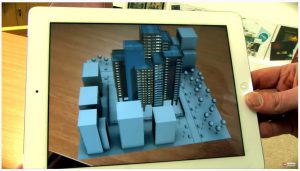Every project that adopts BIM starts with a comprehensive BIM Execution Plan (BIM Execution Plan). A BIM Execution Plan provides a framework for stakeholders to agree on BIM uses in a project, roles, process flows, and the tools to be used to meet the Employer Information Requests.
What is BIM?
According to the US National Building Information Model Standard Project Committee (NBIMS PC), Building Information Modeling (BIM) is a digital representation of the physical and functional characteristics of a facility (NBIMS-US, 2010). It is a highly data-driven process of managing information about a building or structure, with a holistic approach.
BIM brings together structured data from all aspects of a project, from planning to design and development. The BIM approach then uses this data to construct and render digital BIM 3D models of complex infrastructure and buildings. BIM goes planning and design, and extends throughout a building’s entire life-cycle, up to demolition procedures.
Here are a few BIM concepts worth glossing over before we dive into the BIM Execution Plan.
Also explore on Definitions : Real Estate and Construction Terminologies
The BIM ISO 19650 Standard
ISO standards help industries to be more efficient by establishing methodologies, processes, and design specifications. International BIM standards are specified by ISO 19650, which is in turn founded on the UK BIM Level standards, which are Publicly Available Specifications. ISO 19650 consists of a series of documents focusing on different aspects of BIM:
- ISO 19650-1 – principles, concepts, and terminology,
- ISO 19650-2 – information management process,
- ISO 19650-3 – asset operational phase
- ISO 19650-5 – security of information.
BIM Dimensions – 3D, 4D, 5D, 6D & 7D
The basic BIM 3D model has the well known three geographical dimensions of length, width and height (x, y, z). However, additional layers of data can be added to a BIM model to enhance it for better project management, and these layers add an extra dimension to the model. The extra dimension is revolutionizing the AEC industry, and include:
- BIM 3D – Geometry: the basic 3D design BIM model with geographical dimensions x, y, z
- BIM 4D – Time: dimension adds schedules to the model to help plan the project
- BIM 5D – Costing: enhances the model with project budgetary information
- BIM 6D – Sustainability Management: helps to make predictions of energy consumption.
- BIM 7D – Facility Management: stores information about facility operations, managers, operation manuals, warranties, etc., for the facility’s entire lifecycle.
BIM Levels of Detail
The Six Levels of Details (LOD) were published by the BIMForum in 2013, an interpretation of the Levels Of Development established by the American Institute of Architects, back in 2008. These LODs are used to define the amount and scope of information to be included in a BIM model, to help better communication. The six levels of detail in a BIM project are:
- LOD 100 – Concept: here, the model is a shapeless conceptual object, graphically represented with generic shapes and symbols.
- LOD 200 – Approximate Geometry: the model defines perimeters with bounding surfaces and walls
- LOD 300 – Precise Geometry: this level of detail contains accurate information that can be utilized in the construction phase, such as the elevations, sizes, orientation, location etc.
- LOD 350 – Precise Geometry with Connections: LOD 300 enhanced with interfaces and connections to other building components
- LOD 400 – Fabrication: At this level, the model can provide information about fabrication and assembly
- LOD 500 – As-built: contains all necessary information to facilitate operations and maintenance of the building throughout its entire lifecycle.
BIM vs Digital Twin
BIM and Digital Twin are two of the most trendy smart-building technologies in the AEC industry. However, while the two confusingly share many attributes, their applications are different.
One key difference between BIM and Digital Twin is that BIM focuses on the physical structure’s design and construction, while Digital Twin’s focuses on people who interact with the structure. Additionally, while BIM is optimized for visualizations and collaboration, Digital Twin is all about the operation and maintenance of a building, a feature that BIM only provides with BIM 7D.
Explore on Pre-Design Phase in Construction & Real Estate Projects
BIM and Integrated Project Delivery
Integrated Project Delivery is a highly collaborative process where an architect completes a design together with a client and forwards it to a constructor team to build it. A construction management team may be brought on board depending on the size of the project, and all these parties enter into a mutual contract after all the project goals have been set collaboratively.
BIM facilitates IPD projects by providing a structured way of sharing the project’s information to reduce errors and reworks and improve productivity. BIM’s Common Data Environment (CDE) lends a powerful tool for collaboration, keeping all teams updated on priorities, schedules and construction costs.
Going by the apparent complexity, it’s clear that a plan is critical to implementing BIM in a project, and this plan is known as the BIM Execution Plan.
What is a BIM Execution Plan?
Why is a BIM Execution Plan vital to the successful implementation of BIM in a project? The U.S General Services Administration guidelines for BIM software states that “the intent of the BIM Execution Plan (BIM Execution Plan) is to define a foundational framework to ensure successful deployment of advanced design technologies on your BIM-enabled project (BIM Execution Plan, 2010).
The guidelines further state that “BIM Execution Plan is about optimizing work and model flow across the project, as contrasted with optimizing siloed interests”, and that “the key is good planning of the design-to-engineering-to-construction process to minimize downstream surprises, rework, redundancies or gaps in the flow of (model-based) information.”
BIM is a thorough process, and to achieve the promised huge savings in time and cost, a BIM Execution Plan goes a long way to specify the optimum uses of BIM for the project and set the road map for its implementation. Without measurable goals, a project does not stand many chances of success.
A BIM Execution Plan helps to set clear goals and is a direct response to the EIR. It usually consists of two parts. The first is the pre-contract BIM Execution Plan which is presented during bidding, and the second is the post-contract BIM Execution Plan. Let us look at them in more detail.
The pre-contract BIM Execution Plan
Clients requesting for BIM services will often have bold ambitions, but consultancy firms bidding to supply them must ask concise questions and expect direct, concrete answers, to ensure that goals are set out clearly. The pre-contract BIM Execution Plan describes how the team will meet each of the client’s needs. Fundamentally, a pre-contract BIM Execution Plan will contain the following sections of information:
- BIM uses for the project. The proposed uses will determine the BIM software that will be used in the project.
- The skills, working methods and decision making processes for the entire project, demonstrate how the client’s needs will be met.
- A delivery strategy for the Project Information Model (PIM)
- A Project Implementation Plan (PIP)
- Responsibilities of stakeholders, and the information requested in each of the essential stages of the project.
- Information to be availed regarding all key decisions
- Standards and methods for collaborating to ensure that proposed solutions effectively meet the EIR.
- The roles, responsibilities, and authority of each stakeholder such as professionals, builders etc.
- Explains the main stages of the BIM execution process
- Information models and their delivery strategies
- A framework for ensuring compliance with set standards.
Post-contract BIM Execution Plan
A post-contract BIM Execution Plan is drafted after a firm has been awarded a project, and is prepared by all stakeholders together with the client. This is usually an interactive process that aims to respond to the Employer’s Information Requirements (EIR).
Benefits of a BIM Execution Plan
A BIM Execution Plan brings the following benefits to a project:
- All uses of BIM are specified early, facilitating the strategic implementation
- It guarantees that all teams are fully prepared to work with chosen tools and processes
- It lays down an elaborate framework for collaboration among stakeholders
- The reference framework enables new participants to be brought onboard easily
- It ensures that the specifications in the EIR document are met
- All the stakeholders clearly understand their responsibilities
- Fewer surprises and re-works down the line are minimized, saving cost
- Facilitates more accurate plans and describes methodologies
What information is included in a BIM Execution Plan?
BIM Execution Plans are usually drawn for specific projects, but they should include at least the following categories of information to provide a reference framework for the entire project:
- Basic project information – This often includes:
- Project name and number
- Location
- A description of the unique requirements and features
- Stakeholder contact information – Contacts for each participant should be available for smooth and instant communication to enable full collaboration.
- Roles and responsibilities – Each participant will have their roles clearly defined, especially the coordinators of the entire process of planning and implementation in all phases of a project
- Deliverables of the project & delivery strategy – A BIM Execution Plan analyzes the client’s requirements and declares the final outcomes of each phase of the project. Strategies for achieving the deliverables should be laid out in this section.
- Technology requirements – BIM is powered by technology, and for each project, the BIM Execution Plan must define the hardware, networking infrastructure, software packages and tools that will be required to execute the project.
- The BIM process design – As part of the planning procedure, process flow diagrams are used to elaborate the execution process of the BIM plan.
- BIM information exchange – This section describes each use of BIM clearly and provides the details of its implementation
- Collaboration framework – A BIM Execution Plan should lay down methods for collaborating using the digital tools available, including procedures for managing the data model such as file types, structures and access rules.
- Quality control procedures – A method must be defined to ensure that stakeholders follow the BIM Execution Plan as agreed to ensure that all deliverables by each team meet the desired quality.
- Model structure – The BIM Execution Plan will include a solid structure for the model. The team agrees on aspects such as file naming conventions, the coordinate system to use, information modelling standards, etc.
BIM Implementation Plan (BIP) Versus BIM Execution Plan
A BIM Implementation Plan (BIP) is a document that helps to guide the implementation of BIM on a corporate-wide level, whereby every part of the organization’s workflows and processes are affected. It set out a framework for how a company begins the adoption of BIM in their methodologies.
On the other hand, a BIM Execution Plan (BEP) is drafted for the implementation of BIM in the identified uses in a particular project. There is no one universal execution plan that applies to all projects, but each project’s needs determine what will be done, and thus the unique execution plan.
What’s Next?
BIM is a welcome digital revolutionary transformation of the AEC industry, and as more companies gravitate towards Industrialized Construction (IC), the use of BIM technologies will only increase.
Is your company an early or late adopter? To read more about BIM and how it is empowering the AEC industry to produce high performance and climate-conscious buildings, download our Ebook here.
Learn about Architectural Design Process for Residential Development
References
NBIMS-US. (2010). BIM Execution Plan. GSA. Retrieved 2021, from https://www.gsa.gov/real-estate/design-construction/3d4d-building-information-modeling/guidelines-for-bim-software/document-guides/bim-execution-plan
BIM Guide 01 – BIM Overview. (2010). GSA. Retrieved December 8, 2021, from https://www.gsa.gov/real-estate/design-construction/3d4d-building-information-modeling/bim-guides/bim-guide-01-bim-overview
Click here to visit our blog pages for interesting articles.






